Everything We Need to Know About File Compression
File compression helps transfer files more quickly and efficiently while saving memory. Several methods and algorithms are available for this purpose.
There are several known methods for compressing a File. Each of these methods has distinct definitions and concepts, yielding different results across data types.
However, all of these methods are based on the same principle: compressing the data by removing redundancy from the source File data. This article discusses various compression methods, the benefits of compression, and data compression procedures.
File compression
Data compression is used almost everywhere. Many File types use compressed data. Without data compression, a 3-minute music video will be approximately 100 MB, and a 10-minute video can reach up to 1 GB. In data compression, large File sizes can be reduced by deleting unnecessary data while preserving information.
Data compression can be interpreted as reducing the number of bits required to display data. Data compression can save memory capacity, increase File transfer speed, and minimize memory costs and Network bandwidth requirements.
Lossless compression
In data compression without data loss, algorithms are used that allow the recovery of the original data from the compressed File. This method is opposed to lossy compression, which does not allow data to be recovered from a compressed File.
No-loss compression is used when the original File is identical to the File being decompressed. Most lossless compression programs use two types of algorithms: one is used to generate a statistical model of the input data, and the other is used to represent the input data in bit strings using this model.
Lossless compression is a standard method for executable files, as well as text files and spreadsheets, because in these types of files, the loss of words or numbers can alter the information. The most popular compression formats without loss include ZIP, RAR, NCW, FLAC, ALAC, HD-AAC, and WMA, as well as video formats like PNG.
Wasted compression
In the lossy compression method, the data after compression is different from the original data. There are usually two schemes for waste compression:
- Loss conversion codecs: Based on these codecs, the received image or audio sample is divided into small sections.
- Lost Predictive Codecs: The previous and following decoded data are used to predict the current audio sample or image frame.
In some systems, these two methods are used in conjunction with conversion codecs to compress the prediction error signals during the prediction phase. The advantage of the loss-free method over the no-waste method is that, in some cases, it can produce a smaller compressed File than the known non-waste method while still meeting the requirements.
On the other hand, lossless compression schemes can recover the original data, whereas plans with data loss accept part of the data to achieve higher compression.
In compression, data loss reaches a point where no further re-compression of the File is possible. The most famous lossy compression formats, such as MP3, MP4, AAC, WMA, and Ogg, as well as video formats like JPEG, are noted.
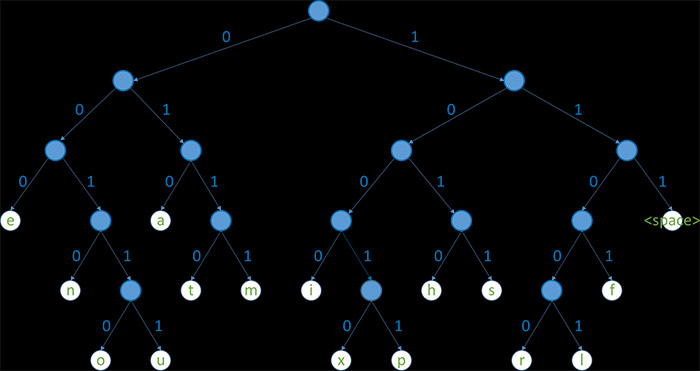
Hoffman encoding method for data compression
Compression history
In 1949, Claude Shannon and Robert Fano invented Shannon-Fano Coding, which assigns codes based on block probabilities. This method is only optimal for variable-length cryptographies. In 1951, David Huffman invented an optimal method that utilized a regular frequency binary tree, which was more efficient than Shannon-Fano Coding.
In 1977, Abraham Lampel and Jacob Ziv developed the LZ77 and LZ78 algorithms. These algorithms quickly became popular. Some current algorithms, such as DEFLATE, LZMA, and LZHXZXX, are derived from the LZ77 algorithm. Due to the LZ78 patent issue in 1984, Unix developers adapted game text algorithms, such as DEFLATE-based gzip and Burrows-Wheeler-based BZip2 formats, designed to achieve a higher compression ratio than LZ78.
Here are five common types of compression offered by SyncBackFree, SyncBackSE, and SyncBackPro backup software:
Conventional compression algorithm in SyncBackFree
DELFATE
Invented in 1993 by Phil Katz. The most modern types of compression are based on this method. This method uses LZ77 with Hoffman Coding. Compression results are obtained in a short time.
Compression methods in SyncBackSE
DEFLATE64
This method offers better performance and compression rate than DEFLATE. This method is known as DEFLATE Improved.
Burroughs Wheeler Converter (BWT)
This method uses a reversible conversion to find duplicate patterns in the data and rearrange them. By rearranging the data, BWT can optimally encrypt the data, leading to higher compression rates.
Types of compression in SyncBackPro
BZip2
Burroughs Wheeler converter type text utilizes simple principles to achieve the optimal balance between speed and compression ratio. This Format is very popular in Unix environments and uses a variety of techniques to generate output. BZip2 can be slow in some instances, particularly when compressing highly random data.
LZMA
The Lampel-Zio-Markov chain algorithm was first introduced in the 7z File Format with the release of 7-Zip archive software in 1998. LZMA in most samples can achieve higher compression than BZip2, DEFLATE, and other algorithms, while using the same speed and memory. Similar to BZip2, a series of compression methods is used to achieve the result.
Practical examples
Becoming familiar with the concepts of File compression theory is necessary to apply them in real applications. Put, compression reduces File size but does not compromise File performance. A practical example is zip files. When you open a zip File, Windows automatically decompresses it and recompresses it again when you close it.
Do I have to compress an entire hard drive?
With compression, files take up less disk space, but the processor spends more time on compressed files. This is because they have to be decompressed and recompressed each time they are used. Since most current computers have a lot of disk space, standard compression is not recommended. Due to high CPU utilization, the process is slow. However, if you use some files infrequently, it is better to keep them compressed.
How to compress files and folders in Windows
Explorer and the Command Line can be used to compress files and folders in Windows. By compressing a File, only that File is compressed. However, by compressing a folder or even a partition, you can compress the entire folder or apply compression rules to subfolders and all the files within it. As shown below, compressing a folder using Explorer gives you two options:
Apply Changes to this folder only.
Apply the changes to this folder, its subfolders, and its files.
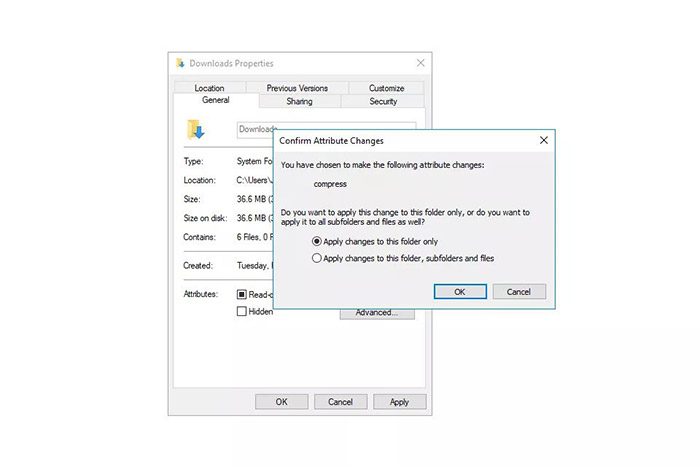
The first option to apply changes to a folder is to assign the compression attribute only to new files. As a result, not every File in the folder is compressed; however, files added to the folder in the future will be compressed. This also applies to new subfolders.
The second option (Apply changes to this folder, subfolders, and files) works as its name implies. All files in the current folder are compressed, as well as all the files in each subfolder. The compression attribute will also be applied to new files.
When compressing drive C or any of the other drives, you will have similar options for compressing folders; however, the steps are slightly different. Open the drive properties in Explorer and enable the Compress this drive option to save disk space.
You will then have the option to apply compression to the root of the drive or all of its subfolders and files. You do not need any other tools or software to compress a File or folder in Windows 10, and you can use the default Windows tool to compress files and folders.
Follow the steps below to compress the File in Windows:
1. Open Windows Explorer and select the File or folder you want to compress.
2. Select the Add to archive option.
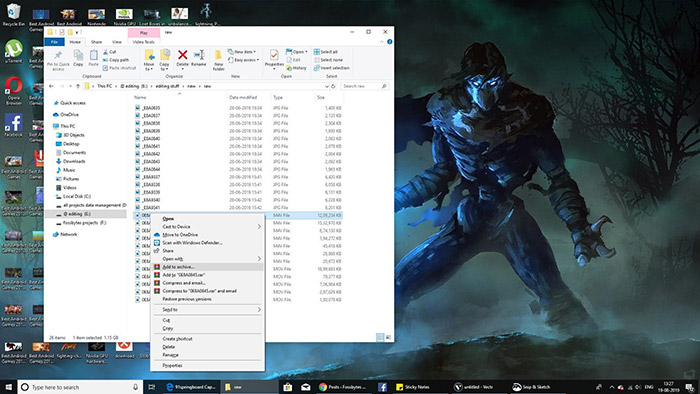
3. In the next window, you will see options for selecting the archive Format, renaming the File, and the compression method.
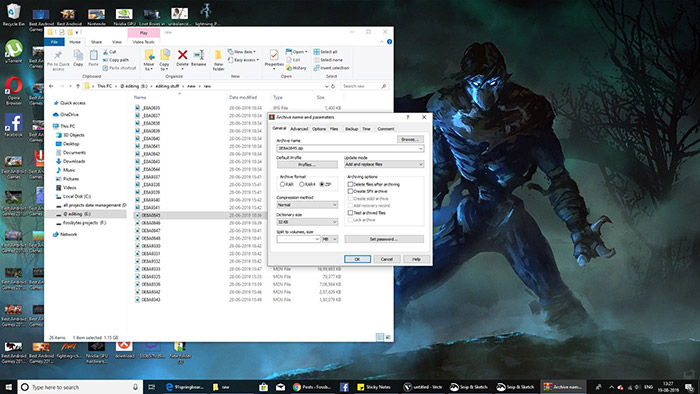
4. To extract files from a compressed folder, open the zip folder by double-clicking on it and drag the contents to the new location.
File compression method on Mac
Mac devices typically include built-in ZIP compression and decompression tools. The Mac compression tool uses a no-waste method and does not compromise data and their quality.
1. Go to the Finder section and select the File or folder you want to compress.
2. Right-click on the File or folder to bring up the pop-up menu, then select the compress option.
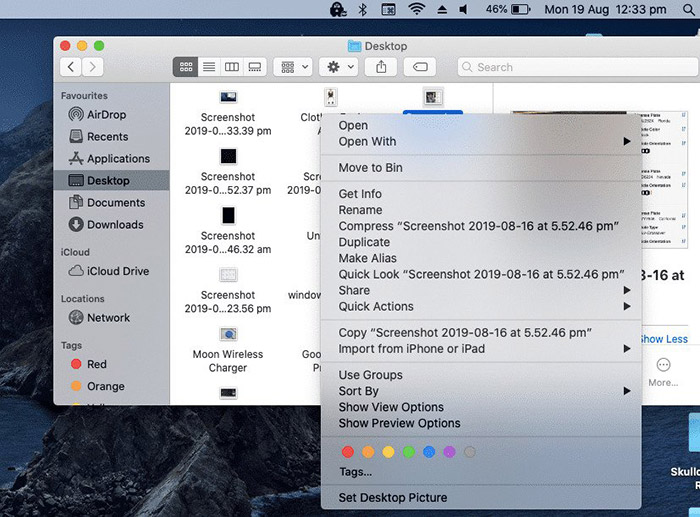
3. When it comes to compressing a File, the process depends on the type of File, the device’s RAM, and its processor.
4. A new copy of the File will be generated in ZIP Format.
To decompress a File and display its contents, double-click it. The Mac embedded tool automatically decompresses the File and opens it.
Compress files in Linux.
Linux and Unix use TAR and gzip as the default File archive Format. You need to remember some commands to compress files. Some of the standard Linux compression commands are:
tar -czvf name_of_archive.tar.gz / location_of_directory
If you have a folder called dir1 in your current folder and want to save it to a File called dir1.archived.tar.gz, you must run the following Command:
tar -czvf dir1archived.tar.gz dir1
File compression limitations
NTFS is the only Windows File System that supports zip files; as a result, partitions formatted with FAT cannot be compressed. Some hard drives can be formatted to use clusters of a size more significant than the default value of 4 KB. Any File System that uses a cluster size larger than this default value will not be able to compress.
Compressing some files in Windows can become problematic because they are required to run Windows. BOOTMGR and NTLDR are two examples of files that should not be compressed. Newer versions of Windows do not support compressing these types of files.
More tips on compressing files
Compressing larger files takes more time. The total compression time depends on the number of files in the folder or hard drive, the size of the files, and the overall speed of the computer. Some files are not compressed well, while others are compressed to 10% or even less of the original File size. For example, most ISO files are compressed during creation. Compressing them with Windows features will not significantly affect the overall File size. In general, you should pay attention to the following points when compressing files:
- Avoid converting a Format with loss when a Format without loss is available.
- Consecutive compression of a File reduces its quality.
- Some ransomware and antivirus software cannot scan compressed files and folders, which puts your device at risk for Security issues. Before decompressing the File, scan it using an appropriate antivirus program and ensure it is compatible with the files.
- Errors may occur due to insufficient disk space or memory when compressing.
In addition to Windows tools, there are several other tools available for compressing files. Each of these software supports a different set of archive formats and offers various features; that’s why choosing the best compression software is time-consuming. The following is a list of the best compression software:
WinZip
WinZip is one of the most popular File compression software programs. With this software, you can optimize the compression and sharing of files and decompress them if necessary. The software connects to multiple storage services, including Google Drive, OneDrive, and Dropbox. One of the features of WinSip is ZipSend, which allows you to compress large files and send them as email attachments. WinZip is one of the best File compression software programs in terms of features and ease of use.
Supported formats: zip, tar, gzip, cab, rar, 7z, IMG, ISO, XZ, VHD, VMDK, lha / lzh
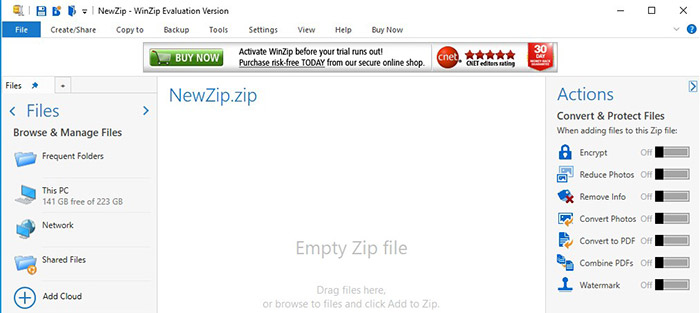
7zip
7-Zip is one of the most popular open-source compression tools, offering high compression rates. If minimizing File size is your priority, 7-Zip can be an ideal option. This software is free because it is open source. 7-Zip, with AES-256 encryption and features such as integrated File management, Windows Shell compatibility, self-extracting capabilities for the 7z Format, and a FAR Manager plugin used at the business and enterprise levels. One advantage of 7-Zip over other compression software is that it is free to use.
Supported formats: 7z, XZ, BZIP2, GZIP, TAR, ZIP, WIM, AR, ARJ, CAB, CHM, CPIO, CramFS, DMG, EXT, FAT, GPT, HFS, IHEX, ISO, LZH, LZMA, MBR, MSI, NSIS, NTFS, QCOW2, RAR, RPM, SquashFS, UDF, UEFI, VDI, VHD, VMDK, WIM, XAR, and Z.

WinRAR
WinRAR is another popular compression software. This software is recommended for compressing multimedia files because it uses the most effective compression method. Other compression tools can only extract RAR files, but WinRAR created the RAR File Format.
You can use the Solid Archive Box feature to compress batch files. In addition to 256-bit AES encryption, WinRAR supports splitting files into sections, repairing damaged files, and handling long filenames. Of course, the WinRAR interface is a bit annoying for novice users. You will also find annoying pop-ups and ads in the free version.
Supported formats: RAR, CAB, ZIP, UUE, Z, ACE, ARJ, 7-ZIP, and TAR
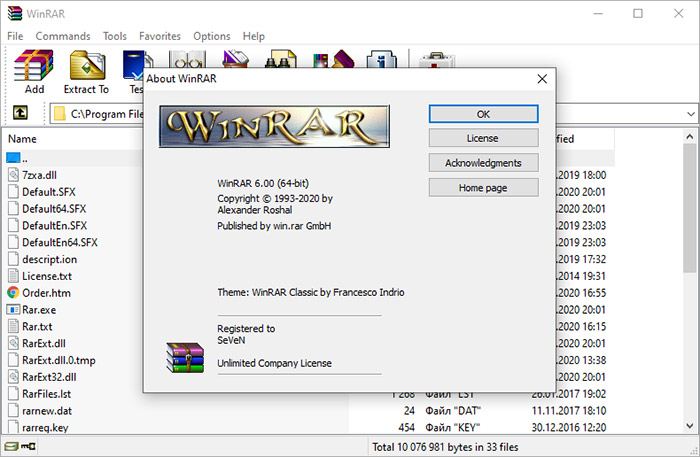
PeaZip
If you frequently work with ZIP files, PeaZip can be a good option. This software compresses and archives files with maximum ease. PeaZIP supports 150 different formats and features, including encrypted password management, two-step authentication, duplicate File search, splitting archives into multiple files, and scheduling archives. PeaZip offers advanced features for compressing all types of files with minimal resource requirements.
Supported formats
- 7z, Google Android apk, bz, bz2, bzip2, tbz2, tbz, gz, gzip, tgz, tpz, tar, zip, zipx, z01, smzip, arj, cab, chm, chi, chq, chw, hxs, hxi, hxr, hxq, hxw, lit, cpio, deb, lzh, lha, rar, r01, 00, rpm, z, taz, tz, iso, pet, pup, pak, pk3, pk4, slp, xpi, wim, u3p, lzma86, lzma, udf, xar, Apple’s dmg, part1, split, swm, tpz, kmz, xz, txz, vhd, mslz, apm, mbr, fat, ntfs, exe, dll, sys, msi, msp, quad, balz, Bcm, zpaq, paq8f, paq8jd, paq8l, paq8o, lpaq1, lpaq5, lpaq8, gnm
- Open Office and LibreOffice formats: ots, odm, oth, oxt, odb, odf, odg, otg, odp, otp, odt, ott
- Microsoft Office formats: doc, dot, xls, xlt, ppt, pps, pot, docx, dotx, xlsx,
- Flash: swf, flv
- Java: war, ear, jar

Zipware
Zipware is a Windows platform compression software. This software supports all major archive formats and efficiently manages small and large archive files. In Zipware, you can create password-protected archive files, perform archiving operations from Windows Explorer, and convert popular archive formats to 7z and Zip. This software allows you to split archive files into different sections. Additionally, Zipware features a password manager for storing and managing passwords. This software is free.
Supported formats: ZIP, ZIPX, 7Z, RAR, RAR5, ISO, VHD, MSI, GZIP, BZIP2, TAR, CPIO, DEB, DMG, LZH, LZMA, LZMA2, PPMd, NSIS, RPM, UDF, WIM, XAR, XPI, CBR, CBZ, XZ, Z.
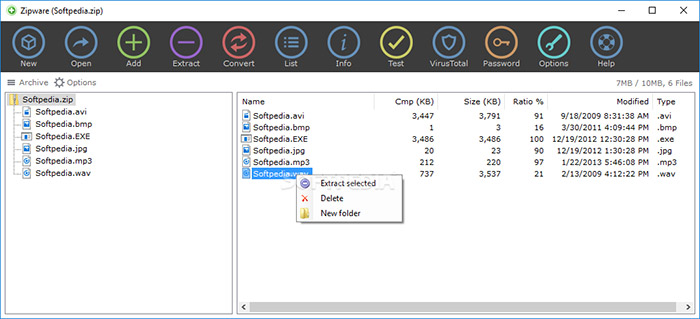
Hamster Zip Archiver
If you are looking for software with high ease of use and advanced compression capabilities, Hamster Zip Archiver is a good choice. This free software supports all major File formats, and its intuitive drag-and-drop user interface makes File compression easy.
Compatibility with cloud services, such as Google Drive, Dropbox, and Yandex Disk, is another feature of this software. Hamster Zip Archiver is only available for the Windows platform.
Supported formats: zip, 7z, arj, bz2, tbz, gzip, deb, dmg, img, gz, tgz, hfs, lzh, rmp, pkg, z, taz, cab, iso, rar, tar, wim, swm, a nd jar.
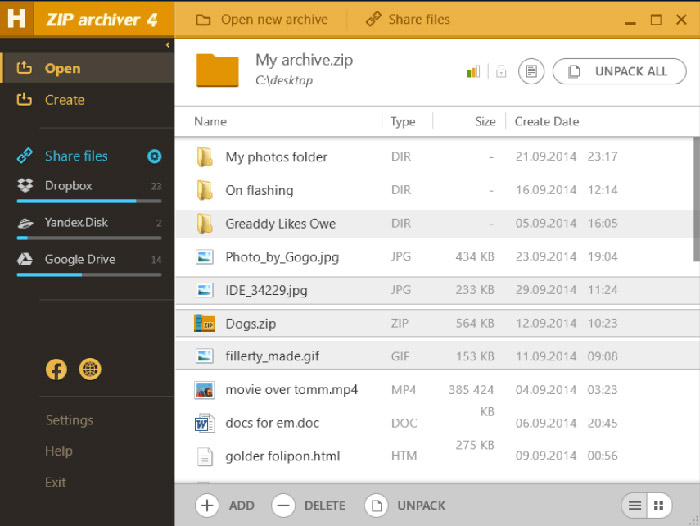
C
Express Zip File compression is the optimal software for File compression. The free version of this software is designed for home and novice users, enabling them to perform daily compression tasks such as zipping or unzipping files, compressing files for email attachments, and opening compressed files in archival formats like RAR, TAR, 7Z, and CAB. You can use this software to compress and reduce the size of the desired File, then share it with friends and family.
Supported formats: Zip, zipx, rar, tar, tgz, tar.gz, gz, gzip, 7z, cab, iso, img, dmg, arj, jar, bz2, tar.bz2, tar.xz, wim, xz, z, bkz, nco, apk, lzh, pkpass, multi-disk (zip.00x), and multi-disk (7z.001).
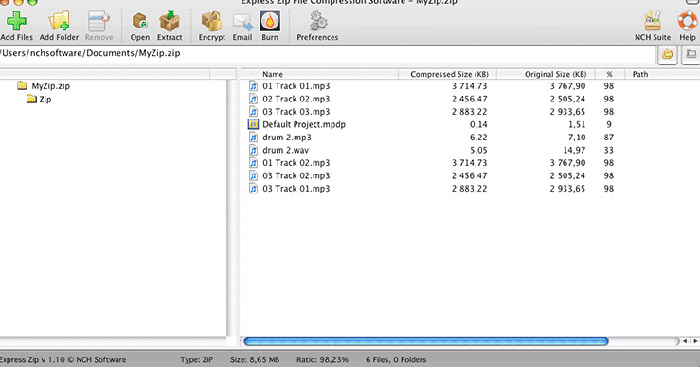
Select the best File compression software.
When choosing the best software for File compression, consider factors such as supported formats, operating System, and compression ratio. In addition to these compression tools, numerous online tools are available for compressing or decompressing files and folders; however, these tools may not be suitable for handling sensitive data.
FAQ
What is file compression?
File compression is the process of reducing the size of a file by removing or reorganizing redundant data so it takes up less storage space and transfers faster.
What’s the difference between lossless and lossy compression?
Lossless compression keeps all original data intact so it can be fully restored upon decompression, while lossy compression permanently discards some data to achieve smaller file sizes.
Why should I use file compression?
Compression saves storage space, speeds up file transfers, reduces bandwidth usage, and can lower storage and transmission costs.
